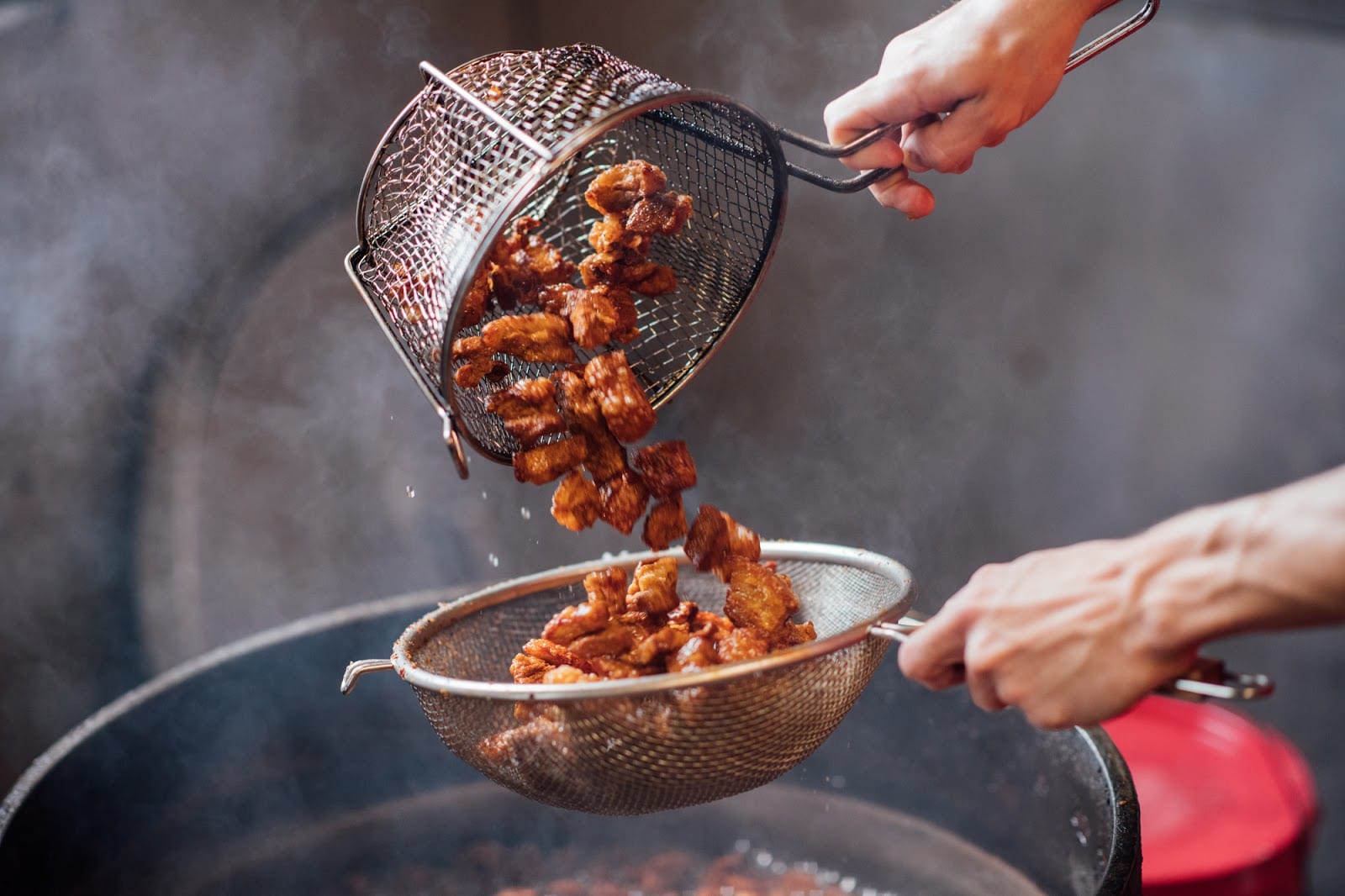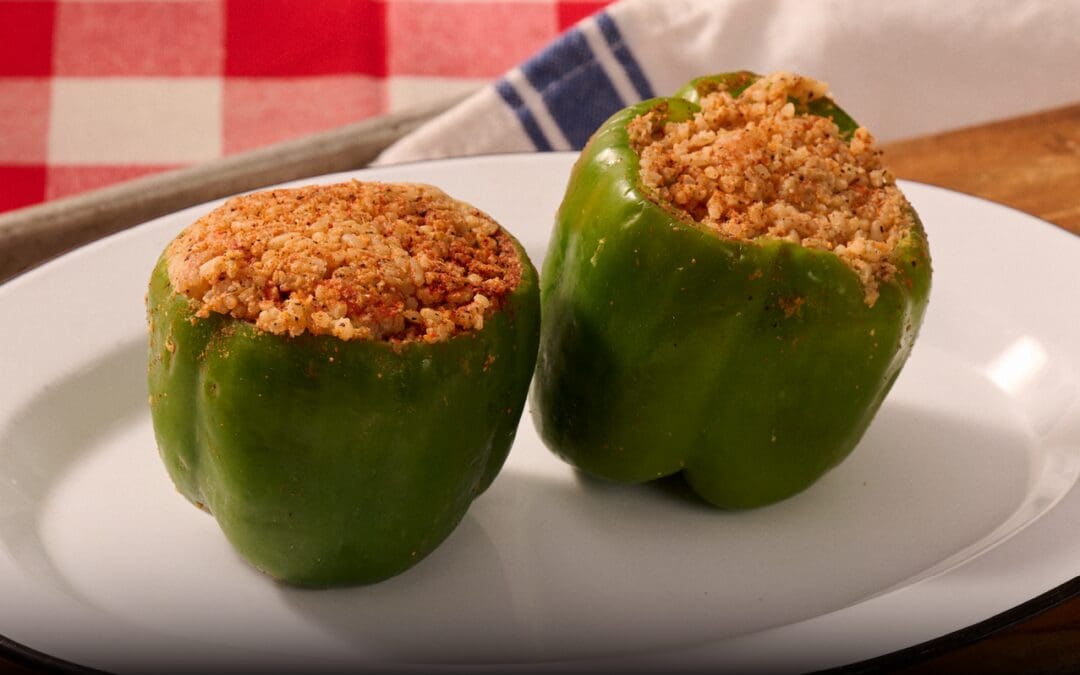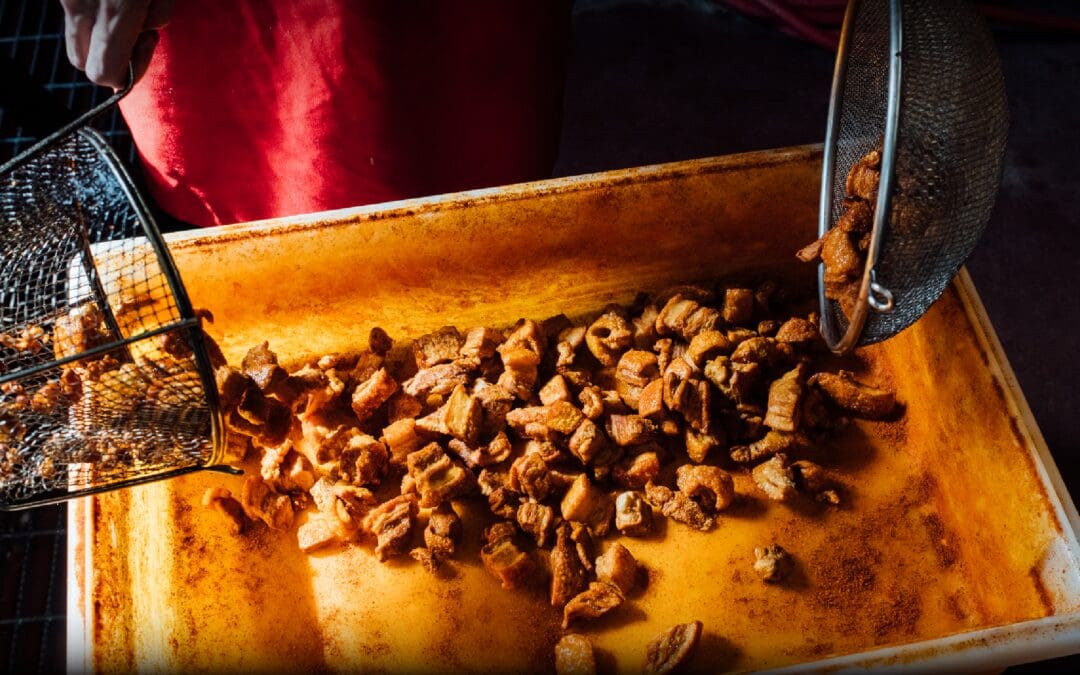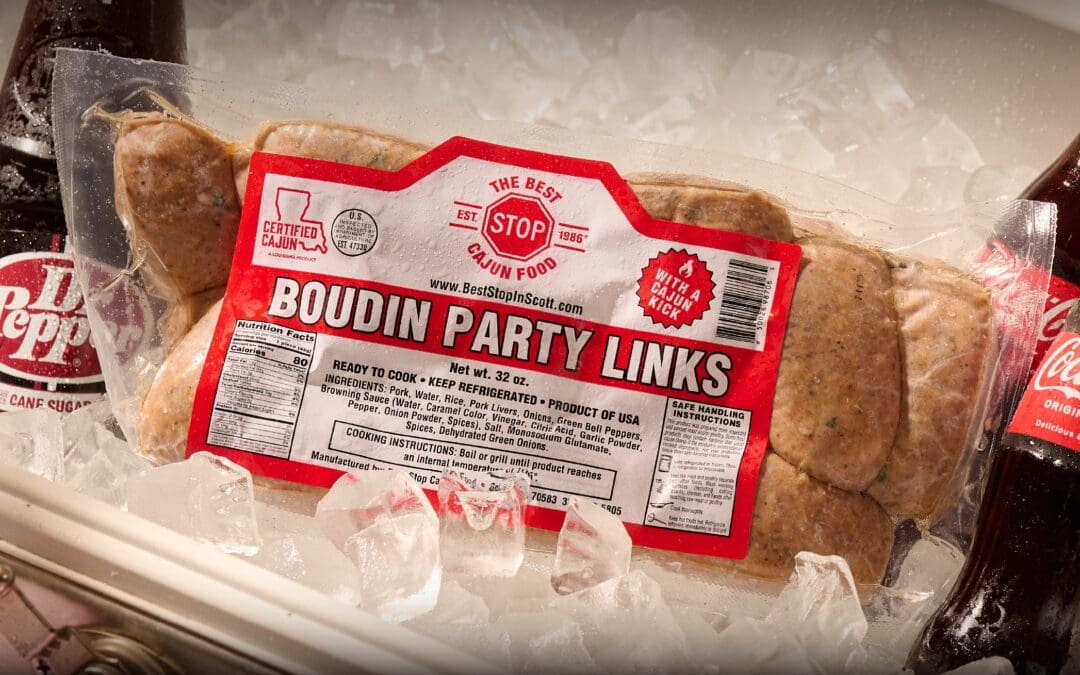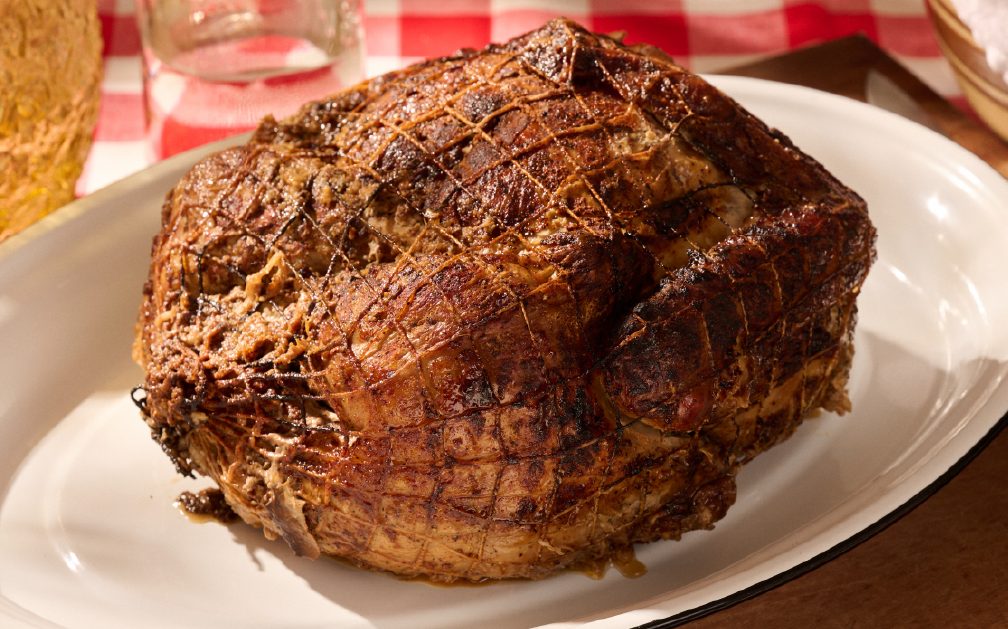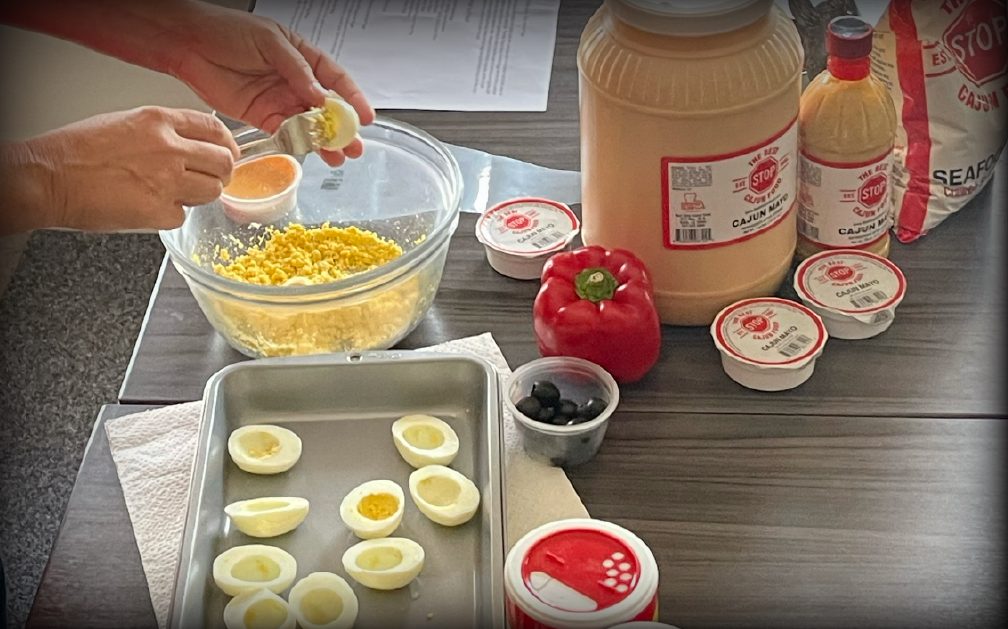It’s no secret that pork is prevalent in Cajun cuisine. That’s because pork is, for lack of a better term, extremely practical. We know, it sounds funny to call a cut of meat “practical”, but let us explain! Compared to other livestock, pigs require very little space to raise, they’ll eat just about anything (most commonly kitchen scraps), they mature quickly, have large litters and produce a lot of lean meat which is high in protein. For the displaced French colonists who found themselves settling in South Louisiana (the same group who came to be known as Cajuns), pigs were very much a necessity for survival.
Because of this, Cajuns learned to use every part of a pig for cooking. Throughout the year, pork roasts and pork chops were prepared and eaten fresh. Sausage, bacon, and ham were typically cured for use throughout the harsher winter months, while the lard was rendered and saved for baking or frying. It was during this rendering process that Cajuns discovered the tasty treat known as cracklin—or “graton” to French speakers.
Similar to bacon but smaller in size, cracklin is defined by its combination of textures: crunchy fried skin, soft rendered fat, and a small snippet of chewy meat make up a decadent concoction of savory flavor. Once rendered, it’s often spiced with either a unique blend of Cajun spices to give it a kick or simply salted to compliment the natural flavor.
How Is Cracklin Prepared?
Cracklin is basically just a by-product of rendering pork fat for lard. By taking all of the excess scraps of fat and other unused parts of a pig and cooking them down for long periods of time, little bits of fried fat and skin would float to the surface of the lard and be scooped and salted to be eaten as a pre-meal snack. Over time, what started as a tasty afterthought of the Boucherie turned into an intentional dish that would eventually take on many forms and be prepared in a variety of methods. Personally, we’re fans of the classic cast-iron “washpot” method. This method involves frying pork belly in a classic cast-iron pot filled with oil until bits of cracklin float to the surface and are skimmed off and then, once cool, are quickly fried again to ensure the perfect crispy texture.
Is It The Same As A Pork Rind Or Fatback?
While the terms are sometimes used interchangeably, cracklin is not the same thing as a pork rind or fatback. A typical pork rind has little to no fat on the skin and is submerged in a fryer to be cooked hot and fast. The resulting snack is puffy and curly, almost resembling a packing peanut. A fatback, also called “lardon” in Cajun country, is mostly fat with a little bit of skin and resembles a savory, dense cube when cooked properly. Cracklin sits somewhere in between the two and is characterized by a balance between fat and skin.
Where Can I Try Cracklin?
We’re glad you asked! The Best Stop has been providing award-winning Cajun cuisine for over 30 years, including all the classic fare like Cracklin and Boudin! Located in the heart of Acadiana in Scott, Louisiana, we are dedicated to providing the best specialty meats available.
We’d love to have you come visit us at the store, but if you can’t make it that’s okay. The Best Stop has an online store that can ship any of our delicious food to shoppers across the country. Give us a try today!


